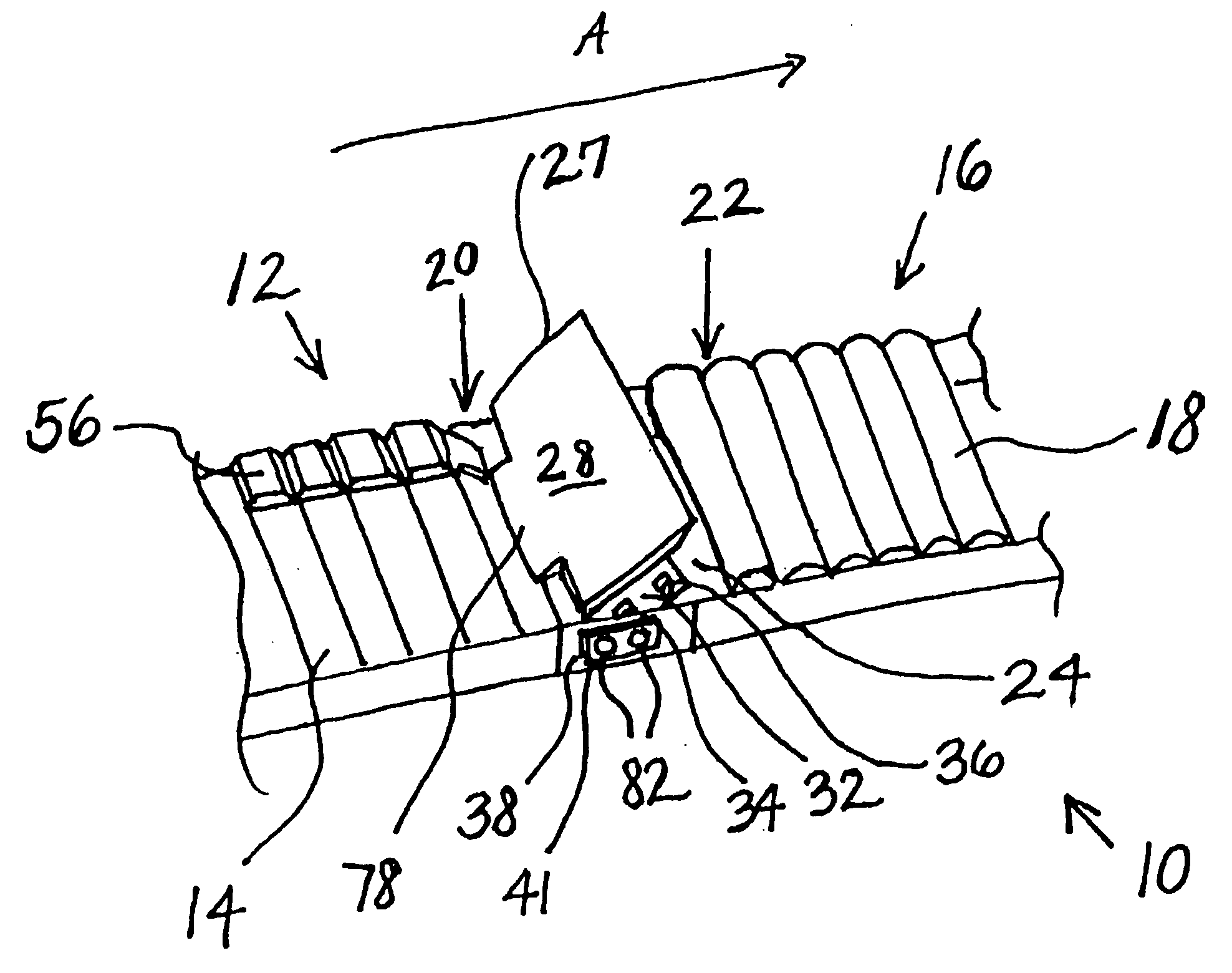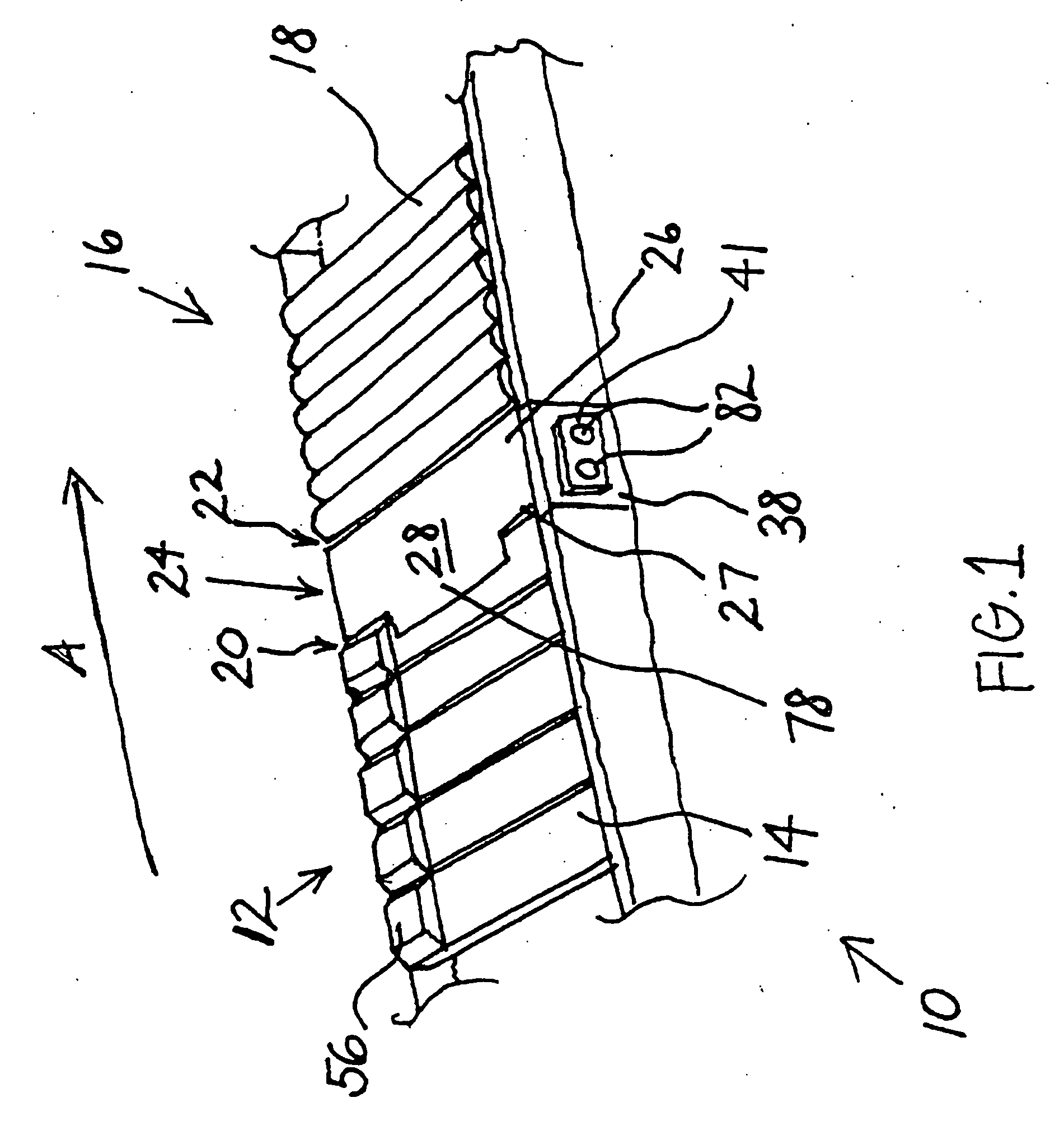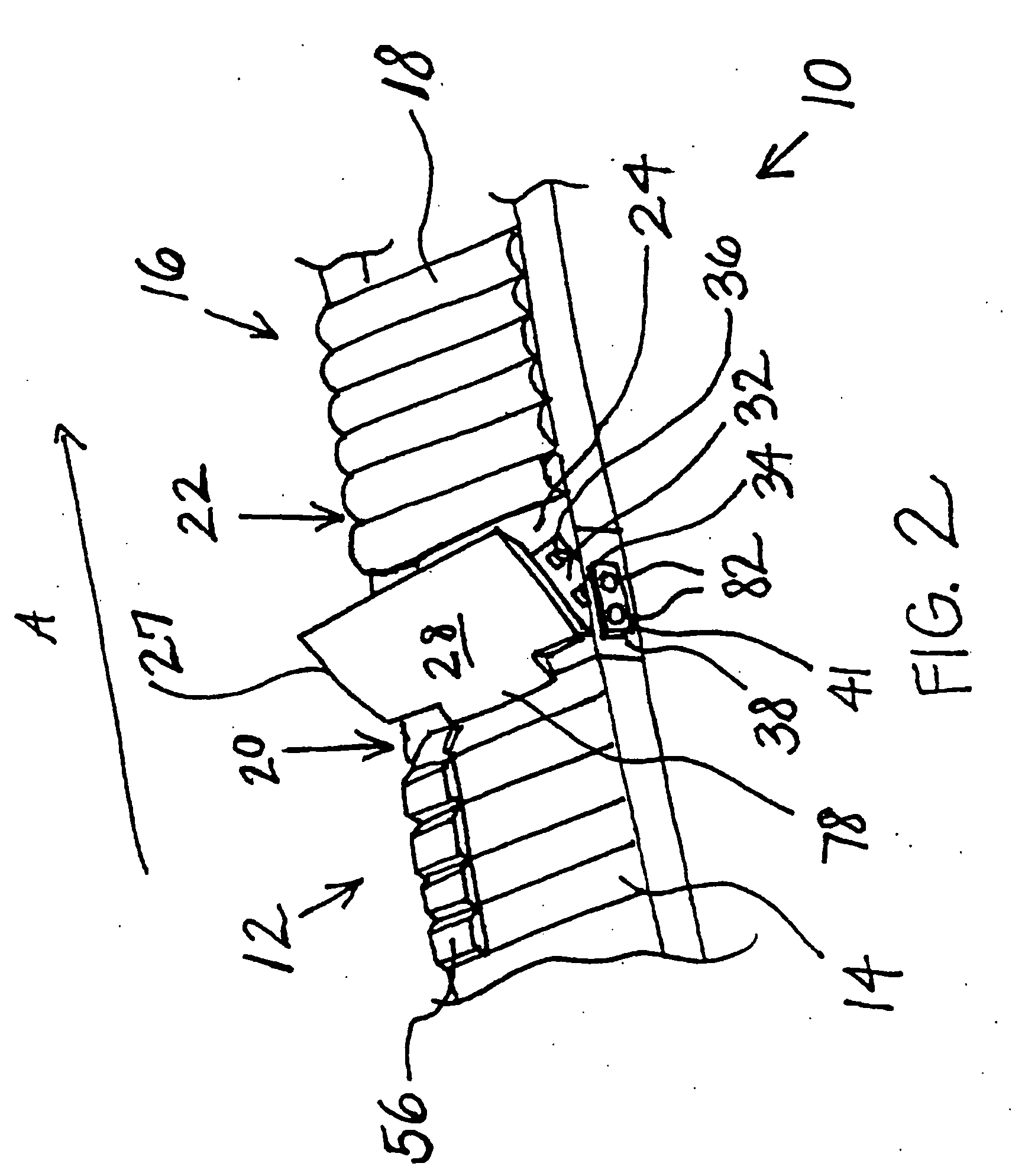Breakaway conveyor discharge
a conveyor and breakaway technology, applied in the direction of conveyor parts, roller-ways, transportation and packaging, etc., can solve the problems of substantial gap, jamming of packages, and conveyors may also be damaged
- Summary
- Abstract
- Description
- Claims
- Application Information
AI Technical Summary
Benefits of technology
Problems solved by technology
Method used
Image
Examples
Embodiment Construction
[0024] Referring now to the figures, a conveyor system 10 includes a first conveyor system 12 with a first slat conveying surface 14 and a second conveyor system 16 with a second conveying surface 18, as best illustrated in FIGS. 1 and 2. First conveying surface 14 includes a discharge end 20 and second conveying surfaces includes a charge end 22. Discharge end 20 and charge end 22 may both have a large radius of curvature due to sprockets or pulleys at each end with a large radius. When adjacent discharge end 20 and charge end 22 are placed in tandem or in series, the ends may form a non-planar gap 24 between conveying surfaces 14, 18. A conveyor discharge member 26 is placed in gap 24 to provide a generally planar surface 28 for smooth transitioning of conveyed objects in a longitudinal direction, A, between conveying surfaces 14, 18, as best illustrated in FIG. 1. Conveyor discharge member 26, which may also be referred to as a breakaway conveyor discharge member, is able to with...
PUM
 Login to View More
Login to View More Abstract
Description
Claims
Application Information
 Login to View More
Login to View More - R&D
- Intellectual Property
- Life Sciences
- Materials
- Tech Scout
- Unparalleled Data Quality
- Higher Quality Content
- 60% Fewer Hallucinations
Browse by: Latest US Patents, China's latest patents, Technical Efficacy Thesaurus, Application Domain, Technology Topic, Popular Technical Reports.
© 2025 PatSnap. All rights reserved.Legal|Privacy policy|Modern Slavery Act Transparency Statement|Sitemap|About US| Contact US: help@patsnap.com



